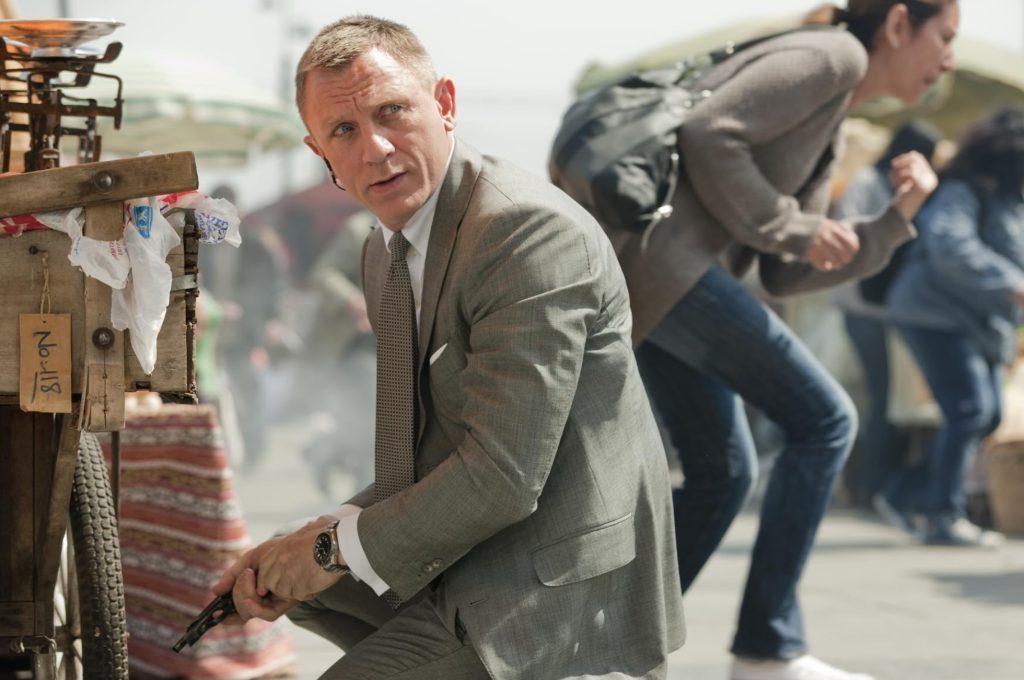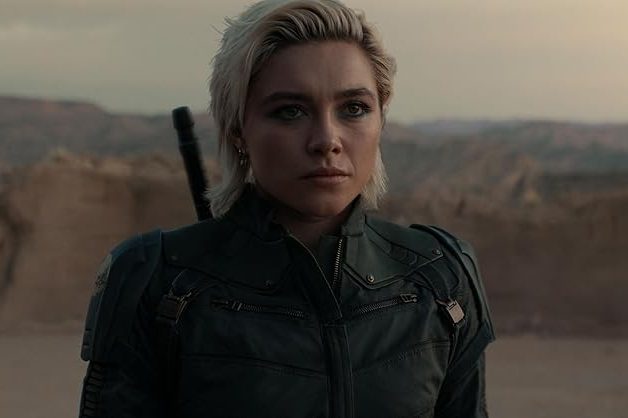The teaser for Spider-Man: No Way Home, out this Christmas, which had a record number of 355 million views in the first 24 hours of online availability, delivers three minutes of thrills. Tom Holland is back, in the titular role, with his girlfriend from the previous Spidey movie, his best friend Ned, references to Mysterion, jokes from Benedict Cumberbatch as master wizard Dr Strange, plus engagement with that most playful of Marvel concepts, the multiverse.
Bring in the multiverse, and anything, everything, is possible. Are you old enough to recall that moment in Dallas when the shooting of JR was revealed to be a dream? Well, the multiverse does all that, and some. Time is not a constant. Black Widow (Scarlett Johansson) can die in Avengers: Endgame a few years ago, and then suddenly arrive back in her own movie, this summer.
This is the glory of Marvel, which has been playing with time and reality since the early 1980s when Captain Britain was tasked to defend one of an entire series of alternate Earths. More recently the critically acclaimed Spider-Man: Into the Spider-Verse managed to cope with a whole load of Spider variants, including Spider-Ham, a pig.
Moreover the franchise is not a dull series of carbon copies, as some critics (including this magazine’s) have claimed. It is more like a set of loosely connected essays, each with a different emotional pull. Some (Endgame), overwhelmingly so. Iron Man dies so that others can live. And if that doesn’t boomingly reverberate in our cultural hinterland, I don’t know what does. Thor: Ragnarok is a comic delight with a properly nasty but magnificent villain in Cate Blanchett. Guardians of the Galaxy looks at how a spaceman fixated on 1970s pop and brought up by hippie parents might behave. All look astonishing, since they have somehow retained the comic-book aesthetic in the moving image. If you halt almost any moment in a Marvel film, you can see how — with enhanced color and action — the comic-book heritage pioneered by Stan Lee (and others) persists. The franchise is even attracting serious directors such as Oscar-winners Chloé Zhao (who will direct Eternals) and Taika Waititi (Thor: Love and Thunder).
The James Bond team must feel slightly piqued by all of this. Bond movies move, statesmanlike, from film to film. Not back and forward. Or up and down. Or between devices. This lack of ability to pivot means that lockdown has been slightly disastrous for 007. We have waited so long for Daniel Craig’s outing as Bond in No Time to Die, which has been pushed back three times since its original release date of April last year, that his appearance this month seems like something from a distant era.
One actor who can provide a remarkable insight into all this thanks to roles in both Bond and Marvel, is Naomie Harris, who plays Moneypenny in No Time to Die and the villain Shriek in the forthcoming Marvel action movie Venom: Let There Be Carnage. Harris doesn’t seem overtly worried about Bond’s return, not least because he has moved with the times. ‘Daniel has reinvented him as a modern man who is also vulnerable. And who has changed how he behaves towards women,’ she tells me. ‘He has had a huge impact. He is one of the film’s producers and he has made sure his voice has been heard. There is no human being who understands the character of Bond as well as Daniel. He lives, eats, breathes it. That is why he’s so good. He understands it as no one else.’
Indeed, the modus vivendi of Marvel and Bond is not wildly dissimilar: both are (vaguely) set in the present day, both have leading characters who singularly try to save the world from destruction with the help of outrageous special skills or equipment. Yet alongside their superhuman attributes, the Marvel cast seems to me somehow more real, since each member is burdened with his or her own Achilles’ heel, which Bond never seems to be. Tony Stark (Robert Downey Jr) might be a genius inventor, but he is also vain and lazy. Captain America (Chris Evans) has a perfect body but is fundamentally unhappy, lost in the modern world. And strongman Thor (Chris Hemsworth) is an indolent boozer.
The films have scripts that allow the comic-book names, ludicrously endowed though they are, to lift themselves out of the strip cartoon. Granted, the Avengers are hardly real people, but is Bond a real spy? The Avengers are at least given real problems to conjure with: grief, betrayal, frustration and love. Can you sit dry-eyed through the moment in Endgame when master thief Scott Lang, also known as Ant-Man (Paul Rudd), is reunited with his daughter on the doorstep after a five-year hiatus? It’s minimal, but powerful.
Cue soppy music.
Ant-Man: ‘Cassie?’
Daughter: ‘Dad?’
Huge hug.
Ant-Man (after a long pause): ‘…you’re so big!’
Audience dissolves. I’ve just watched it again on my phone; still dissolved. Ant-Man has to cope not only with being a divorced dad, but also with the ability to turn into a giant, or minuscule, insect. His character exists in a space somewhere between Gregor Samsa and Alice Liddell, and Rudd gets away with it. All the Marvel actors do. All right, they are probably paid squillions, but in return they dive into the make-believe with proper chutzpah. There is no sideways winking or phoning it in. This makes watching a Marvel film rewarding for an adult, whereas something such as Kung Fu Panda, which I have followed for three outings, is not.
And then there is the business of Marvel, which is remarkable. The marshaled appearance of the films this season, some of which were also mothballed, makes it seem as though the release schedules had never been disrupted, thanks to the ease with which the characters migrate to online streaming, rather like Captain America jumping from one moving train to another. Much of this flexibility comes from Marvel’s base in a huge roster of comics rather than a shortish span of novels.
As important are the platforms. When the multiplexes went dark, Marvel, being part of Disney, simply hauled writers, stars — hell, the entire multiverse — on to Disney+, while the much smaller Bond has had to wait 17 agonizing months for cinemas to reopen.
‘Maybe it’s because it is British, and follows a British way of making films,’ Harris says. ‘What makes it different is that at the helm of Bond is a brother and sister team who make the decisions. Whereas with Marvel, it’s a collective of producers. One is a family, and one a business.’
What a business it is, though. TV lockdown spin-offs mean that Marvel has had time to shape, develop and market lesser (and cheaper) characters. Hence, a nine-parter series for Paul Bettany’s Vision and Elizabeth Olsen’s Wanda, and also for Loki, played by Tom Hiddleston, who ended up being played by Hiddleston, Sophia Di Martino, Jack Veal, Richard E. Grant and an animatronic crocodile. How? The multiverse.
The Falcon and the Winter Soldier, a six-episode romp starring Anthony Mackie as the winged Avenger and Sebastian Stan as his brainwashed counterpart, cost $25 million per episode but has worked masterfully as a device to position Mackie as the next Captain America, whenever that film turns up. Probably next year.
Meanwhile in cinemas, Marvel’s first Asian superhero film, Shang-Chi and the Legend of the Ten Rings, did even better than predicted in US box offices early last month, smashing the record for a Labor Day weekend opening with more than $71 million in ticket sales. Are you still with me? Phase Four, the first tranche of Marvel Cinematic Universe productions, which interlocks television series with feature films, will mean at least six movies alongside as many TV shows between now and 2022.
Cantering alongside all of this for the past 18 months has been a highly entertaining subgenre of comment, conjecture and conspiracy practiced on YouTube by geeky people such as Erik Voss, on New RockStars, who takes you through every episode of WandaVision or Loki, frame by frame. The idea is to help you further understand the point behind every single Marvel reference, alongside flogging skiploads of merch, including Loki Variant socks and sweatshirts decorated with code words that turn Winter Soldier from nice guy into killing machine. I bought one for my son, with whom I have watched every single one of these shows. Marvel has been something of a lockdown delight, giving us little treats every Friday or Wednesday to look forward to.
Some bewail the wholesale dominance of time-vaulting superheroes in general, and the awesome dominance of Marvel films and TV series in particular, on current culture. I rather applaud it, through tears. Yes, I cried at the end of Black Widow. Such is the command of writing and utilization of global talent in the Marvel Cinematic Universe that the flipping of time or a multiplicity of universes is nothing. Audiences buy it. Human power and its accompanying frailties shine through.
Eternals opens in cinemas on November 5 and Spider-Man: No Way Home on December 17. Shang-Chi and the Legend of the Ten Rings and Venom: Let There Be Carnage are out now.
This article was originally published in The Spectator’s UK magazine. Subscribe to the World edition here.

























